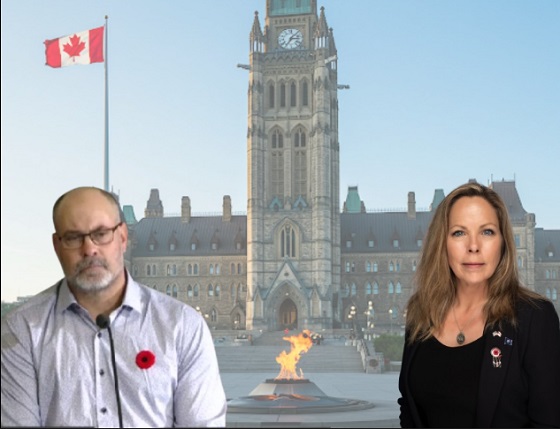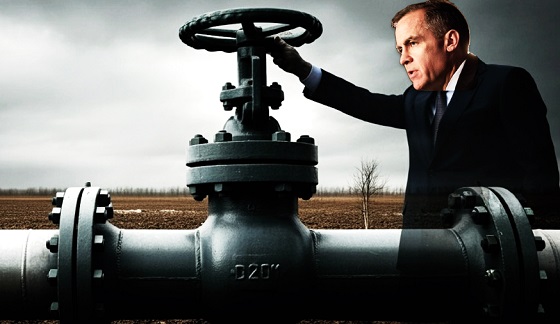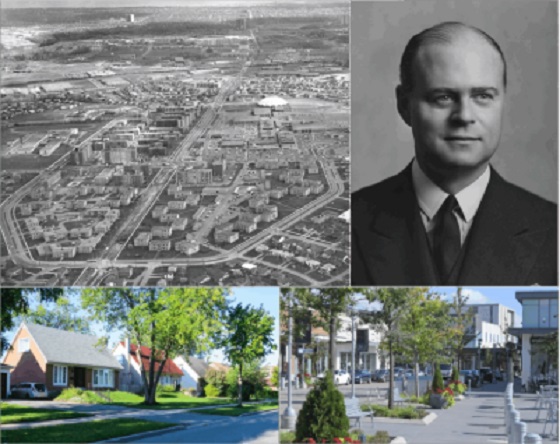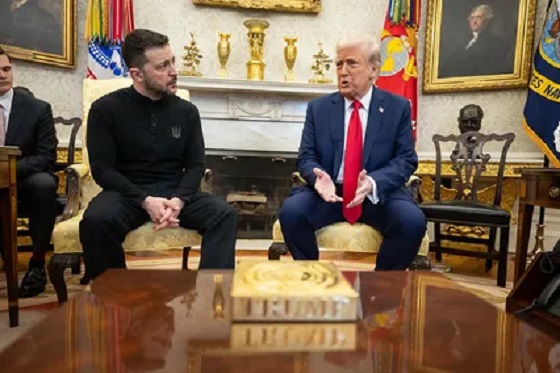C2C Journal
“Freedom of Expression Should Win Every Time”: In Conversation with Freedom Convoy Trial Lawyer Lawrence Greenspon

Lawrence Greenspon Defends the Fundamental Freedoms of All Canadians
By Lynne Cohen
“Law is an imperfect profession,” famed American lawyer Alan Dershowitz – defender of such notorious clients as Claus Von Bülow, Jeffrey Epstein, Harvey Weinstein and O.J. Simpson – once wrote. “There is no perfect justice…But there is perfect injustice, and we know it when we see it.”
Like Dershowitz, Lawrence Greenspon has spent a career fighting injustice in all its forms. Over the past 45 years Greenspon has become one of Canada’s best-known criminal lawyers through his defence of a long list of clients at risk of being crushed by Canada’s legal system – from terrorists to political pariahs to, most recently, Tamara Lich, the petite grandmother who became the public face of the 2022 Freedom Convoy protest.
In taking on these cases, Greenspon is not only giving his clients the best defence possible, he’s also defending the very legitimacy of Canada’s legal system.
Lich faced six charges and up to 10 years in jail for her role organizing the peaceful Ottawa protest. Earlier this month she was found guilty on a single charge of mischief. The Crown says it intends to seek a two-year sentence for that one charge.
In an interview, Greenspon said he decides on cases based on whether he believes in the cause central to the case: “What’s at stake. And can I make a difference?” What attracted him to Lich’s case were key aspects of the Charter of Rights and Freedoms that Greenspon felt needed defending. “Canadians have a constitutionally protected right to freedom of expression and freedom of peaceful assembly,” he said. “These are fundamental freedoms, and they’re supposed to be protected for all of us.”
At issue was the impact the protest had on some downtown Ottawa residents and whether that conflicted with Lich’s right to free speech and peaceful protest. “We were prepared to admit right off the bat that there were individuals who lived in downtown Ottawa who experienced some interference with their enjoyment of their property,” Greenspon noted.
“But when you put freedom of expression and freedom of peaceful assembly on a scale against interference with somebody’s enjoyment of property, there’s no contest. Freedom of association and peaceful assembly, and freedom of expression – these should win every time.”
Such a spirited defence of Canadians’ Charter rights is characteristic of the entire body of Greenspon’s legal work. Although his clients aren’t always as endearing as Lich.
Prior to being in the spotlight for the Lich trial, most Canadians probably remember Greenspon from the 2008 trial of Mohamed Momin Khawaja, the first person charged under Canada’s Anti-Terrorism Act. The evidence against Khawaja was substantial and convincing. He was even planning a suicide mission against Israel. Greenspon is a Jew. It was not an issue.
“The fundamental point is that everybody’s entitled to a defence,” Greenspon said. What really mattered was the constitutionality of the new terror law, which Greenspon argued impinged on the free speech rights of Canadians.
In 2018 Greenspon represented Joshua Boyle, who faced over a dozen criminal charges stemming from accusations made by his wife Caitlin Coleman after they returned from being held captive in Afghanistan. Greenspon’s meticulous cross-examination of Coleman led Judge Peter Doody of the Ontario Superior Court of Justice to conclude, “I do not believe her, just as I do not believe Mr. Boyle.” All charges against Boyle were dismissed.
He also defended Senator Mike Duffy, who in 2014 found himself charged in connection with an expense account scandal. “Duffy’s presumption of innocence had been completely annihilated. I had no problem representing Mike. In fact, I feel proud to have represented Mike,” he said.
Throughout his legal career, Greenspon has fought tirelessly for the constitutional rights of all his clients, regardless of public sympathy or apparent guilt. While such a stance can make him unpopular, such work offers a crucial bulwark against the state’s misuse of its authority in pursuing particular individuals, as well as the gradual erosion of the liberties promised to all Canadians by the Charter of Rights and Freedoms.
Every Canadian has a stake in ensuring the court system is held to account at all times, regardless of the apparent evidence, current political mood or public support.
Without the work of lawyers such as Greenspon, Charter rights can soon deteriorate into empty platitudes – as the federal government’s shocking treatment of the peaceful Freedom Convoy protesters revealed. That included the unjustified imposition of the Emergencies Act, the freezing of donors’ bank accounts, the mass arrest of supporters and the marked reluctance to grant bail to those charged.
As Greenspon pointed out numerous times during the trial, the conciliatory and always respectful Lich represents the very ideals of peaceful protest in Canada. And for the sole charge on which she was convicted, she still faces two years in a federal penitentiary.
In the case of Khawaja, Greenspon was asked by an Ottawa synagogue to explain why he, as a Jew, was defending an Islamist terrorist. “I told the synagogue members, somebody has to stand up for the person who finds themselves set against the entire machinery of the state. In this case it happens to be Khawaja. But what if the next guy is named Dreyfus?”
Lynne Cohen is a writer at C2C Journal, where the longer original version of this story first appeared.
Business
Carney’s Energy Mirage: Why the Prospects of Economic Recovery Remain Bleak

 By Gwyn Morgan
By Gwyn Morgan
Gwyn Morgan argues that Mark Carney, despite his polished image and rhetorical shift on energy, remains ideologically aligned with the Trudeau-era net-zero agenda that stifled Canada’s energy sector and economic growth. Morgan contends that without removing emissions caps and embracing real infrastructure investment, Canada’s recovery will remain a mirage — not a reality.
Pete Townshend’s famous lyrics, “Meet the new boss / Same as the old boss,” aptly describe Canada’s new prime minister. Touted as a fresh start after the Justin Trudeau years, Mark Carney has promised to turn Canada into a “clean and conventional energy superpower.” But despite the lovey-dovey atmosphere at Carney’s recent meeting with Canada’s premiers, Canadians should not be fooled. His sudden apparent openness to new energy pipelines masks a deeper continuity, in my opinion: Carney remains just as ideologically committed to net-zero emissions.
Carney’s carefully choreographed scrapping of the consumer carbon tax before April’s election helped reduce gasoline prices and burnished his centrist image. In fact, he simply moved Canada’s carbon taxes “upstream”, onto manufacturers and producers, where they can’t be seen by voters. Those taxes will, of course, be largely passed back onto consumers in the form of higher prices for virtually everything. Many consumers will blame “greedy” businesses rather than the real villain, even as more and more Canadian companies and projects are rendered uncompetitive, leading to further reductions in capital investment, closing of beleaguered factories and facilities, and lost jobs.
This sleight-of-hand is hardly surprising. Carney spent years abroad in a career combining finance and eco-zealotry, co-founding the Glasgow Financial Alliance for Net Zero (GFANZ) and serving as the UN’s Special Envoy for Climate Action and Finance. Both roles centred on pressuring institutions to stop investing in carbon-intensive industries – foremost among them oil and natural gas. Now, he speaks vaguely of boosting energy production while pledging to maintain Trudeau’s oil and natural gas emissions cap – a contradiction that renders new pipeline capacity moot.
Canada doesn’t need a rhetorical energy superpower. It needs real growth. Our economy has just endured a lost decade of sluggish overall growth sustained mainly by a surging population, declining per-capita GDP and a doubling of the national debt. A genuine recovery requires the kind of private-sector capital investment and energy infrastructure that Trudeau suppressed. That means lifting the emissions cap, clearing regulatory bottlenecks and building pipelines that connect our resources to global markets.
We can’t afford not to do this. The oil and natural gas industry’s “extraction” activities contribute $70 billion annually to Canada’s GDP; surrounding value-added activities add tens of billions more. The industry generates $35 billion in annual royalties and supports 900,000 direct and indirect jobs. Oil and natural gas also form the backbone of Canada’s export economy, representing nearly $140 billion per year, or about 20 percent of our balance of trade.
Yet Quebec still imports oil from Algeria, Saudi Arabia and Nigeria because Ottawa won’t push for a pipeline connecting western Canada’s producing fields to Quebec and the Maritimes. Reviving the cancelled Energy East pipeline would overcome this absurdity and give Canadian crude access to European consuming markets.
Carney has hinted at supporting such a project but refuses to address the elephant in the room: without scrapping the emissions cap, there won’t be enough production growth to justify new infrastructure. So pipeline CEOs shouldn’t start ordering steel pipe or lining up construction crews just yet.
I continue to believe that Carney remains beholden to the same global green orthodoxy that inspired Trudeau’s decade of economic sabotage. While the United States shifts course on climate policy, pulling out of the Paris Accord, abandoning EV mandates and even investigating GFANZ itself, Canada is led by a man at the centre of those systems. Carney’s internationalist career and personal life – complete with multiple citizenships and a spouse known for environmental activism – underscore how far removed he is from ordinary Canadians.
Carney’s version of “clean energy” also reveals his bias. Despite the fact that 82 percent of Canada’s electricity already comes from non-greenhouse-gas-emitting sources like hydro and nuclear, Carney seems fixated on wind and solar-generated power. These options are less reliable and more expensive – though more ideologically fashionable. To climate zealots, not all zero-emission energy is created equal.
Even now, after all the damage that’s been done, Canada has the potential to resume a path to prosperity. We are blessed with vast natural resources and skilled workers. But no economy can thrive under perpetual policy uncertainty, regulatory obstruction and ideological hostility to its core industries. Energy projects worth an estimated $500 billion were blocked during the Trudeau years. That capital won’t return unless there is clarity and confidence in the government’s direction.
Some optimists argue that Carney is ultimately a political opportunist who may shift pragmatically to boost the economy. But those of us who have seen this movie before are sceptical. During my time as a CEO in the oil and natural gas sector, I witnessed Justin’s father Pierre Trudeau try to dismantle our industry under the guise of progress. Carney, despite or perhaps because of his polish, may be the most dangerous of the three.
The original, full-length version of this article was recently published in C2C Journal.
Gwyn Morgan is a retired business leader who was a director of five global corporations.
Business
New Towns Offer a Solution to Canada’s Housing Crisis

The postwar Canadian Dream: Don Mills, unveiled in 1953, was Canada’s first self-contained, suburban New Town. The brainchild of industrialist E.P. Taylor (top right), it offered young Canadian families the opportunity to abandon hectic downtown living for a more bucolic lifestyle in the suburbs.
By John Roe
Prime Minister Mark Carney says his plan to end Canada’s interminable housing crisis is to “Build Baby Build”. We can hope.
Unfortunately, Carney’s current plan is little more than a collection of unproven proposals and old policy mistakes including modular homes, boutique tax breaks, billions of taxpayer dollars in loans or subsidies and a new federal building authority.
The enormity of the task demands much broader thinking. Rather than simply encouraging a stacked townhouse here, and a condo there, Canada needs to remember what has worked in the past. And what other countries are doing today. With this in mind, Carney should embrace New Towns.
Also known as Garden Cities or Satellite Cities, New Towns are brand-new, planned communities of 10,000 or more citizens and that stand apart from existing urban centres. These are more than the suburbs reflexively loathed by so many planners and environmentalists. Rather, New Towns can offer a diverse mixture of living options, ranging from ground-level housing to built-to-purpose rental apartments and condominiums. As self-contained communities, they include schools, community centres along with shopping and employment opportunities.
New Towns represent the marriage of inspired utopianism with pragmatic realism. And they can provide the home so many of us crave.
Originally conceived in Britain during the Industrial Age, Canada witnessed its own New Town building boom during the post-war era. Communities built in the 1950s and 1960s including Don Mills, Bramalea, and Erin Mills in Ontario were all designed as separate entities meant to relieve population pressure on nearby Toronto. Other New Towns took advantage of new resource opportunities. Examples here including Thompson, Manitoba which sprang up around a nickel mine, and Kitimat, B.C., which was built to house workers in the aluminum industry.
While New Town development largely died off in the 1970s and 1980s, it is enjoying a revival today in many other countries.
Facing his own housing crisis and building on his country’s past experience, British Labour Prime Minister Keir Starmer has established a New Towns Taskforce that will soon choose 12 sites where construction on new communities will begin by 2029.
On the other side of the Atlantic — and the political spectrum — U.S. President Donald Trump — has proposed awarding 10 new city charters for building New Towns on underdeveloped federal land.
Meanwhile, several Silicon Valley billionaires are backing Solano, a planned city 60 miles east of San Francisco with a goal of creating a new community of up to 400,000 people by 2040. And Elon Musk is already building a New Town at Starbase, Texas as the headquarters for his SpaceX rocket firm.
To be fair, not every New Town has been a success. In the late 1960s, Ontario tried to build a brand-new city on the shores of Lake Erie known as Townsend. Planned as a home for up to 100,000 people, the project fizzled for a variety of reasons, including a lack of proper transportation links and other important infrastructure, such as schools or a hospital. Today, fewer than 1,000 people live there.
Despite the lessons of the past, there are three compelling reasons why Carney should include New Towns as part of his solution to Canada’s housing crisis.
First, by starting with a blank canvas, a New Town offers the chance to avoid the stultifying NIMBYism of existing home owners and municipal officials who often stand in the way of new development. The status quo is one of the biggest obstacles to ending the housing crisis, and New Towns are by their very nature new.
Second, because New Towns are located outside existing urban centres, they offer the promise of delivering ground-level homes with a yard and driveway that so many young Canadians say they want. Focusing growth exclusively in existing urban centres such as Toronto, Vancouver and Montreal – as Carney seems to be doing – will deliver greater density, but not fulfil the housing dreams of Canadian families.
Third, New Towns can herald a more prosperous and unified Canada for the 21 st century. New Towns could be built in regions such as Ontario’s Ring of Fire, rich with minerals the world demands. New Towns could also tighten the east-west ties that bind the country together. Further, this growth can be focused on areas with marginal farmland, such as the Canadian Shield, which in Ontario starts just a 90 minute drive north of
Toronto.
New Towns are already beginning to pop up in Canada. In 2017, for example, construction began on Seaton Community, a satellite town adjacent to Pickering Ontario that will eventually grow into six neighbourhoods with up to 70,000 residents. And this spring, the southwestern Ontario municipality of Central Elgin unveiled plans for a New Town of 9,000 residents on the edge of St. Thomas.
Having promised Canadians fast and decisive “elbows up” leadership, our prime minister should throw his weight behind New Towns. To begin, he could appoint a New Town Task Force, similar to the one in Britain to get to work identifying potential locations. Even better, he could simply say his government thinks New Towns are a good idea and let the private sector do all the heavy lifting.
If the millions of Canadians currently shut out of the housing market are to have any chance at owning the home of their dreams, New Towns need to be in the mix.
John Roe is a Kitchener, Ont. freelance writer and former editorial page editor of the Waterloo Region Record. The original and longer version of this story first appeared at C2CJournal.ca
-

 International1 day ago
International1 day agoIsrael’s Decapitation Strike on Iran Reverberates Across Global Flashpoints
-

 Business2 days ago
Business2 days agoTrump: ‘Changes are coming’ to aggressive immigration policy after business complaints
-

 illegal immigration2 days ago
illegal immigration2 days agoLA protests continue as judge pulls back CA National Guard ahead of ‘No Kings Day’
-

 conflict2 days ago
conflict2 days agoIsrael strikes Iran, targeting nuclear sites; U.S. not involved in attack
-

 Alberta1 day ago
Alberta1 day agoPunishing Alberta Oil Production: The Divisive Effect of Policies For Carney’s “Decarbonized Oil”
-

 Alberta1 day ago
Alberta1 day agoAlberta Premier Danielle Smith Discusses Moving Energy Forward at the Global Energy Show in Calgary
-

 Energy1 day ago
Energy1 day agoCanada is no energy superpower
-

 Fraser Institute1 day ago
Fraser Institute1 day agoLong waits for health care hit Canadians in their pocketbooks






